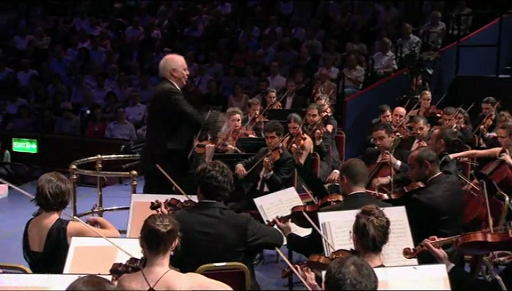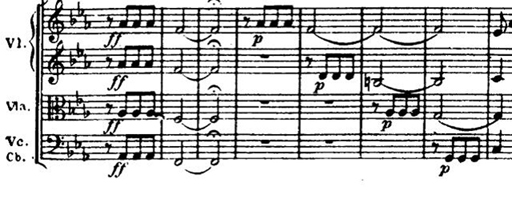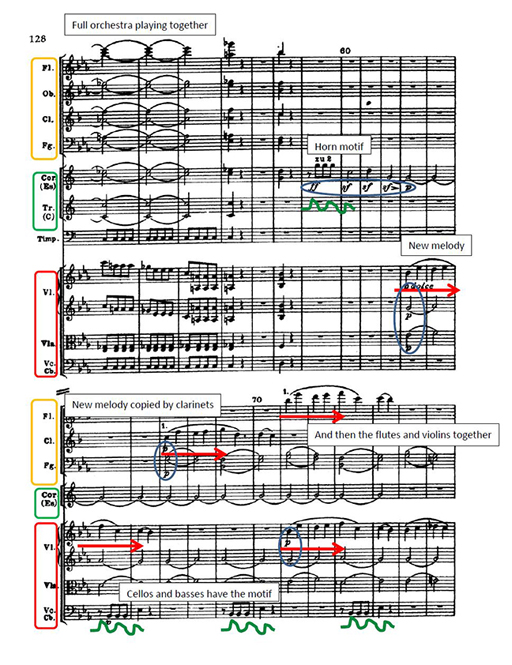4.3 Following a motif

Our final score is one of the best known and most loved symphonies ever written – Beethoven’s fifth symphony.
As you have worked through different scores over the last four weeks, you have encountered several important techniques used by composers in writing their music down. You have had simple melodies, music written in ‘blocks’ of sound as chords, accompaniments made up of fast-moving notes, music that is fragmented with rests and broken up between hands on the piano or different instruments in the orchestra and so on. Now you are going to put it all together. The techniques haven’t changed, but the individual way Beethoven uses them may make them look different.
You will recognise the iconic start to this symphony. Looking at the score, you will see a block of string instruments all moving together. This group of instruments presents the main motif.

Then we have a fragmentation of this motif, passing between instruments with lots of rests in the parts that are not playing. This is followed by another section of block chordal movement then a different fragmentation of the motif, called imitation – each line follows the previous with the same idea.

Finally the whole orchestra plays together in layers, with all the strings playing fast-moving notes, while the wind and brass play in chords, first in short notes and then in long sustained notes. After a brief silence, the horns play the motif on their own, to introduce a new melody played by the violins.

This new melody is then copied by other instruments, keeping its shape as it moves between different instruments. The other layers of sound are long sustained notes that create an accompaniment to the melody, and repetitions of the motif. If you were conducting this section, you would probably want to be aware of these different layers. This section ends with another passage that moves between chordal writing and a layered texture where one section of the orchestra is moving fast and another is playing chords at the same time.
